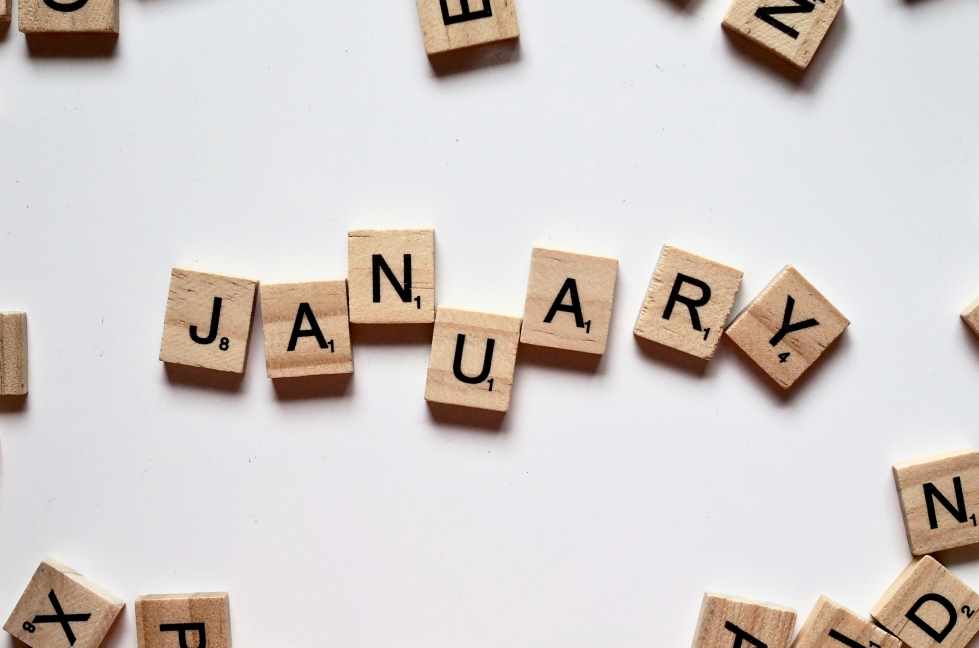As another tax return filing deadline looms close, January is the perfect time to review your tax position and ensure that you are maximising all available tax reliefs for the current tax year, ending 5 April 2022.
The 2021/22 tax year has seen the final retirement of loan interest relief against residential property income and has been a record year for wage growth. You may now find that you have considerably higher levels of income than in prior years, and, without realising it, you could now find that you have tipped over into the higher/additional tax bands and your entitlement to allowances are now lower.
For example when Mrs X calculates her taxable rental income for the year, all loan interest on residential buy to let property will be disallowed and cannot be deducted from her rental income, instead a 20% tax credit is given to offset against her tax liabilities. When comparing the situation to the prior year, Mrs X taxable income was £50,000 after allowing for £4,000 in loan interest, however, for 2021/22 her taxable income will now be £54,000. The downside to this, other than a potential higher rate tax liability, is the knock-on effect on certain benefits and allowances. For example the savings income allowance, is £1,000 for those paying tax at basic rate, but this is reduced to £500 for higher rate taxpayers.
Another one to watch out for is the high-income child benefit charge, if your income exceeds £50,000 the benefit is clawed back at a rate of 1% of the benefit for every £100 of income earned over. Again, a slight rise in wages, or the effect on rental income as described could mean you face a larger tax bill at the year end when you are required to pay back excess child benefit received.
Furthermore, if your income exceeds £100,000 your personal allowance is reduced by £1 for every £2 of net income over £100,000, meaning that income between £100,001 and £125,000 has a whopping effective rate of 60%. If you are nearing the income threshold you should consider trying to reduce your taxable income below £100,000.
Here are my top planning points to consider putting into action as the end of the tax year approaches:
1. Making Gift Aid Donations
The benefit of giving to charity is twofold, you are helping a charity that is close to your heart while receiving extra tax relief. Win-win!
It is likely that most will only consider their gift aid donation of cash, however, gift aid donations can also include gifts of goods to charity shops.
Charities can reclaim basic rate tax from HMRC, such that the amount you actually donate is grossed up by 20%, if you are a higher rate taxpayer, you can get additional tax relief which means more of your income is taxed at basic rate instead of at higher rate.
Furthermore, as discussed above, if you are in the position where your income exceeds the £50,000/£100,000 thresholds you may be paying tax at a higher rate, having your child benefit clawed back or losing your personal allowance, making a gift aid donation can certainly help the situation. When calculating your adjusted net income, charitable donations are taken into account. This means that the amount given to the charity is added to the tax relief the charity reclaim and this total amount is taken off your taxable income. This lower adjusted net income figure can reduce the amount of tax you pay, because it is used to work out:
- The amount of Personal Savings Allowance you receive;
- Whether your Personal Allowance is restricted or entirely lost; and
- If your child benefit is to be clawed back and you have a high income child benefit charge to pay.
With this in mind, it is worth considering accelerating any Gift Aid donations you are planning to make during 2022/23 to ensure they are made before 31 January 2023, rather than 5 April. This is because donations made prior to completing your 2021/22 tax return (due 31 January 2023) can be treated as if they were made in 2021/22 to accelerate claiming of the relief and/or maximise tax relief if, for example, you find you are paying tax at a higher rate in 2021/22.
Alternatively, rather than selling shares to give the money to charity, it is possible to give listed shares to a charity. The result is that you can claim income tax relief based on the value of gifted shares in the year of the donation without triggering a CGT liability if the shares were to be disposed of at a gain. However, it may be a different situation if the asset is standing at a paper loss, selling the shares first to crystallise a loss (which you can used against future gains) and simply claim gift aid tax relief on the gift of the sales proceeds to the charity.
2. Make pension contributions
Making personal pension contributions or exchanging a proportion of your salary in return for employer pension contributions can help to reduce your taxable income, certainly if you are trying to keep it below the £50,000/£100,000 thresholds to retain allowances and lower tax rates. In the example above, Mrs X’s income had increased to £54,000 and she found they were now paying tax at the higher rate plus she may have a child benefit charge to pay. In this situation she may wish to consider making a payment into her personal pension to reduce their assessable income to £50,000 which will ensure she pays tax at the more favourable basic rate and retain her child benefit.
Basic rate 20% tax relief is given automatically on personal pension contributions, this means that this amount will also pass automatically into your pension. Higher rate and additional rate taxpayers can claim further relief on their tax return (unless a salary sacrifice pension, as relief is given at source).
When it comes to tax, there are always limits on the amount of tax relief that can be claimed. An individual can claim income tax relief on pension contributions (a combination of personal and employer contributions) currently of £40,000. Care should be taken when making a contribution as your taxable earnings must be at least equal to the amount of the personal contributions made.
It is possible to make contributions in excess of the annual £40,000 allowance, by making use of the pension carry forward rules which allows unused pension allowances from the previous three tax years to be used. This means that by using the current year’s allowance and that of the previous three years, it is possible to contribute up to £160,000 to your pension scheme and receive tax relief on the whole amount so long as you earn at least this amount.
For those who have earnings of less than £40,000, the maximum will be limited to those earnings. Furthermore, if you have no earnings, you can still make a pension contribution of up to £2,880, which when paid into your pension will increase to £3,600 as you will receive basic rate tax relief at 20%.
Care must be taken if your earnings exceed £240,000 (adjusted for employer pension contributions), as you will start to lose your annual allowance, and once your adjusted income exceeds £312,000, your tapered annual pension allowance will be reduced to a mere £4,000.
You can still pay more than your pension annual allowance into your pension, but beware, you will not receive any tax relief and will have a tax clawback at your marginal rate. You can either pay this clawback via your Tax Return, or if within the strict time limit, you may wish to ask your pension scheme to pay the charge from your pension pot.
As always we advise that you take advice from your Independent Financial Advisor.
3. Claim your WFH allowances
Working from home (WFH) has become the new norm for many over the last couple of years with employers asking employees to stay home and work to reduce the impact of COVID-19. This may have resulted in your household costs increasing and you have not been able to recover these from your employer, in this case you are eligible to claim working from home tax relief at a rate of £6 per week. In certain situations, a claim for a proportion of certain household expenses can be made, if that is higher than the equivalent of £6 a week. HMRC has given the allowance for the whole year, even if the requirement to work from home is not there for the complete year.
Furthermore, If you were required to buy equipment and were then reimbursed by your employer you will not face a tax charge as a temporary measure was introduced by HMRC in 2020/21 in relation to purchase of equipment for COVID-19 workers and this was extended to 2021/22, as long as the following criteria is met:
- The equipment is obtained for the sole purpose of enabling the employee to work from home as a result of the Coronavirus outbreak.
- The provision of the equipment would have been exempt from income tax if it had been provided directly to the employee by or on behalf of the employer.
4. Sharing assets between you
While marriage shouldn’t be entered into just to gain a tax benefit, it is a welcomed bonus. One of the benefits of being married is that spouses can generally transfer assets between themselves free of inheritance or capital gains tax.
With income tax rates for additional taxpayers (income exceeding £150,000) being at a whopping 45% in England, Northern Ireland and Wales, (46% in Scotland) if assets could be gifted to a basic rate tax-paying spouse, annual tax savings of 25% can be achieved. Even if one spouse is a higher rate taxpayer and the other a basic rate taxpayer, savings of up to 20% tax, sharing assets between you is worth considering.
Furthermore, the split of shares between spouses also gives the opportunity for each to take advantage of the £2,000 tax-free dividend allowance.
While transferring income-producing assets such as investment properties and shares between spouses is a legitimate way of reducing overall income tax liabilities, stamp duty land tax must be considered, certainly when transferring properties subject to a mortgage.
5. Gifts
When it comes to inheritance people aren’t normally aware there are annual allowances for inheritance tax (IHT) just like income tax and CGT.
If you are looking to reduce the value of your overall estate, each year you can gift £3,000 free of IHT, and if you have not used the previous year’s amount, you can use that to gift up to £6,000 in the year.
In addition, there is a small gifts exemption of up to £250 per person per year, beware, if the £250 is breached, the whole amount becomes chargeable.
Making regular gifts out of income is an unlimited exemption from IHT. While there is no cap on this exemption, it is limited to the excess income you have each year and the gift must not reduce your normal standards of living. You must be able to provide evidence to HMRC who will ask for a list of your normal expenditure items and compare this with the income available to you. HMRC will look to the amount of income per year and will generally not accept income is carried forward for more than two years.
In addition, these must be regular payments; while this does not have to be on an annual basis, anything longer will make it more difficult to prove regularity of payment.
There are also specific exemptions for gifts made in consideration of marriage – just in case you’d like to contribute to the big day!
If started early, using the annual allowances and making gifts out of income can be a very effective way to shift considerable sums from your chargeable estate overtime and reduce your IHT exposure.
Kate Thorburn is our Private Client Tax Manager – please call Kate on 01242 776 000 or email kate.thorburn@randall-payne.co.uk if you would like a no-obligation discussion about your personal tax affairs to ensure you are effectively using the allowances available to you before the 2022 deadlines.



